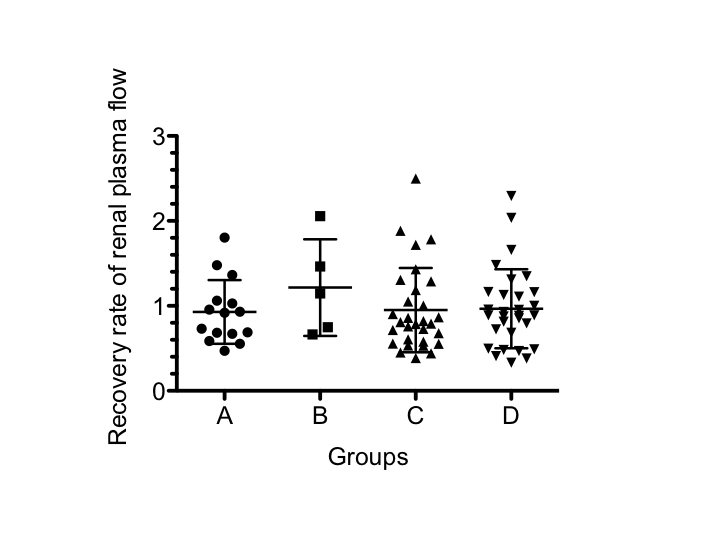Does the Choice of Renal Arterial Anastomotic Methods in Kidney Allografts with Multiple Renal Arteries Affect the Recovery Rate of Renal Plasma Flow after Kidney Transplantation?
Nephrology, Toho University, Faculty of Medicine, Ota-ku,Tokyo, Japan
Meeting: 2020 American Transplant Congress
Abstract number: D-083
Keywords: Arteritis, Graft function, Kidney/liver transplantation, Radiologic assessment
Session Information
Session Name: Poster Session D: Kidney Technical
Session Type: Poster Session
Date: Saturday, May 30, 2020
Session Time: 3:15pm-4:00pm
 Presentation Time: 3:30pm-4:00pm
Presentation Time: 3:30pm-4:00pm
Location: Virtual
*Purpose: In cases of kidney allografts with multiple renal arteries, renal arterial anastomotic methods vary in each recipient. The aim of this study is to investigate whether renal plasma flow (RPF) recovery varies by assessing renal scintigraphy in each allograft before and after the kidney transplantation.
*Methods: Among 430 living-related kidney transplant cases from January 2010 to August 2019 at our institution, we included 46 case who received kidney allografts with multiple renal arteries and 30 cases with single renal artery allograft as the control. We compared two phases of RPF of kidney allografts, that were measured by renal scintigraphy (99mTc-MAG3) in each donor before transplantation (dRPF) and recipient on the day of the operation (rRPF). Patients were divided into four groups according to the anastomosis methods of multiple renal arteries or single renal artery: Group A, anastomosis by conjoined method (n =15); Group B, anastomosis by end to side method (n=5); Group C, anastomosis by in situ anastomosis of each renal artery (n=26); and Group D, anastomosis of single renal artery (n=30).
*Results: There were no differences in body weight among four groups (ANOVA), which reflected no difference in total circulating blood volume. dRPF in each group was not statistically different (ANOVA) (Group A vs B vs C vs D, 262.6 ± 75.1 vs 267.6 ± 89.3 vs 255.8 ± 49.4 vs 251.9 ± 43.9 mL/min, respectively). rRPF in each group was not statistically different either (Group A vs B vs C vs D, 253.9 ± 178.1 vs 288.2 ± 57.5 vs 243.6 ± 114.0 mL/min, respectively). We defined the recovery rate of RPF in each allograft as the division of rRPF by dRPF (rRPF/dRPF). Comparison of the recovery rate of RPF in each group revealed that there were no statistical differences between the groups (Group A vs B vs C vs D, 0.93 ± 0.38 vs 1.22 ± 0.57 vs 0.99 ± 0.51 vs 0.97 ± 0.46, respectively).
*Conclusions: Assessment of ERPF of kidney allografts in donors and recipients revealed that recovery rate of renal plasma flow after transplantation was not different according to the difference in the arterial anastomotic methods in kidney allograft with multiple renal arteries.
To cite this abstract in AMA style:
Nishikawa K, Shinoda K, Yonekura T, Maeda M, Oguchi H, Hidaka Y, Muramatsu M, Kawamura T, Hamasaki Y, Sakai K, Shishido S. Does the Choice of Renal Arterial Anastomotic Methods in Kidney Allografts with Multiple Renal Arteries Affect the Recovery Rate of Renal Plasma Flow after Kidney Transplantation? [abstract]. Am J Transplant. 2020; 20 (suppl 3). https://atcmeetingabstracts.com/abstract/does-the-choice-of-renal-arterial-anastomotic-methods-in-kidney-allografts-with-multiple-renal-arteries-affect-the-recovery-rate-of-renal-plasma-flow-after-kidney-transplantation/. Accessed July 18, 2025.« Back to 2020 American Transplant Congress

